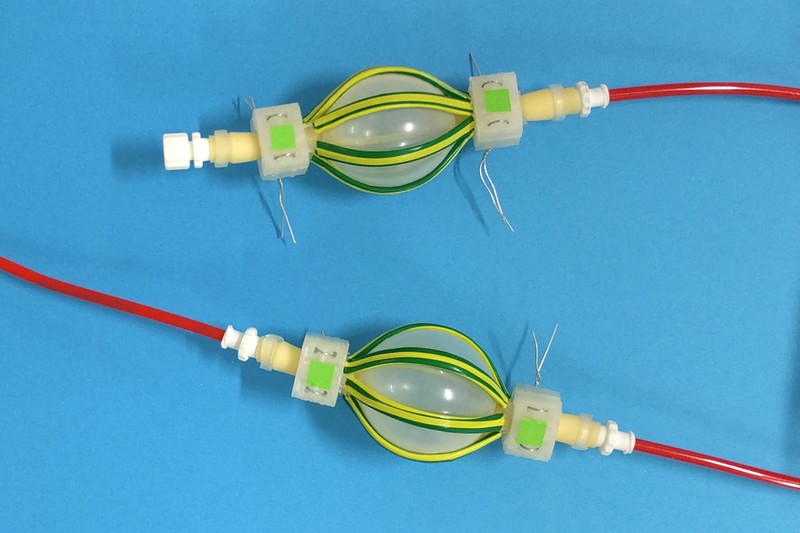FONSim
Fluidic network simulator for Soft Robotics (SoRo)

The soft robotics research community works towards creating highly compliant systems with soft materials. The resulting behavior is complex and strongly nonlinear, particularly when several components are combined in a networked system. On one hand, this allows embedding intricate functionality into the hardware, promising autonomous systems that are both affordable and robust. On the other hand, it also makes it difficult to reason and simulate these systems, and successfully designing soft systems remains an art.
While there are well-developed system simulators popular in the industry, such as Modelica-based ones and MATLAB Simulink, these are rarely used in soft robotics research because they do not out-of-the-box support common soft robotics components and require considerable learning time. This is evident from several one-off numerical simulations created as part of other research works. This barrier to simulating lumped soft robotic systems is undesirable because simulations can greatly speed up R&D, especially concerning systems with morphological control and towards inverse design. FONSim addresses this challenge - a simulator capable of handling the high nonlinearities in soft robotics components and being easily used by soft robotics researchers. As of May 2023, this open-source simulation package is in use at several of the leading soft robotics research labs.
You can experience FONSim in your browser with binder and consult its documentation at fonsim.org. As a simple example, figures 1 and 2 below show a typical soft robotic pneumatic system with two balloon actuators in series together with the simulation results of this system. Of interest is that the system is driven through four distinct stable states using only a single source and small pressure variations. The phase lag (actu_0 leads actu_1) has been used to make walking robots.


FONSim’s initial seed was the walking soft robot project in my undergraduate studies. Back then, the simulation was hardcoded to two actuators, two tubes and one pressure source. Over the years, Bert Van Raemdonck and I worked to generalize the applied concepts. Balloon actuators with experimentally derived pressure-volume curves, compressible fluids, user-definable components with implicit equations, and a backward Euler (implicit) solver with adaptive timestep adjustment are some of the key developed features. Aside of developing the simulator, resolving the related challenges gave considerable practical insight in the core principles underlying system simulators such as SPICE and Simulink. Furthermore, this project gave me hands-on experience with software documentation, automated testing and CI/CD.
FONSim was introduced to the wider soft robotics community in April 2023 with the conference publication FONS: a Python framework for simulating nonlinear inflatable actuator networks [PDF] at the 2023 IEEE 6th RoboSoft conference in Singapore. The project was a team effort by mostly four people at the Leuven Soft Robotics Group. In particular, I would like to thank Bert Van Raemdonck, soft robotics PhD researcher, for his code contributions and especially his thoughtful and always-on-the-mark feedback. Also, dr. Edoardo Milana, postdoc researcher, who was one of the first to apply FONSim in research projects and was instrumental in publishing and sharing the work. Finally, I greatly respect prof. Benjamin Gorissen, who over the years gave his support for this project, as well as presented it at the RoboSoft conference.